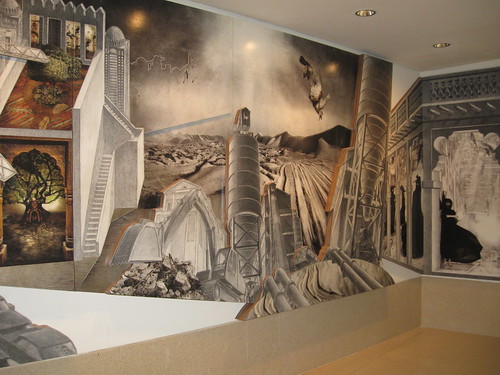In the media, Muslim Arab women are often portrayed as very conservative, veiled, and regularly, if they’re from the Gulf, wearing Abaya’s. However, what are also portrayed in the media are ideas of urbanization and modernization. In the recent years, due to the globalization and modernization theories, traditions and cultures in the Middle East are being thrown out the window. For the purposes of being “modern” and transitioning into urbanization, cultures and traditions that we once followed for essential reasons are being forgotten or drastically changed. The Abaya that was once supposed to serve the purpose of covering a woman up and concealing the shape of her body is now turned into a fashion statement. That may be due to the fact that the women here feel alienated from themselves. Marx’s theory of alienation helps us understand that. It basically states that due to the social structure and social class stratification enforced on us by society, we eventually begin to feel detached from our work, from our life activities, from ourselves, and from the people around us. We can use this theory and apply it to the situation here. Because the women are forced to wear the Abaya and look like every other woman around them, they’re beginning to feel invisible. They can’t express their personalities through fashion; they can’t stand out. This makes them feel alienated from themselves and from society, and I believe that this may be one of the reasons for the invention of the “modern Abaya”.
A variety of designers have turned the Abaya into beautifully designed dresses. I cannot deny that the art and thought put into designing those items of clothing is spectacular, but they’re not Abaya’s. Many new designers have come up with “modern Abaya” collections, a few Arab’s and a few westerners. The students of VCU in Qatar have come up with a project called the “Abaya Project” where they all contribute their beautiful designs of modern Abaya’s.
Here are some examples to demonstrate my explanations of today's modern Abaya.
The following video highlights a Modern Abaya Exhibition held in Katara’s Art Center here in Doha, displaying their beautiful designs.
I do agree that these new designs are very inventive, and can allow a woman to highlight her beauty whilst still being conservative. It allows them to express themselves and present their personalities through fashion. But going back to our original values, cultures and traditions, this is defying the purpose of the Abaya and hence defying our cultures and traditions.























